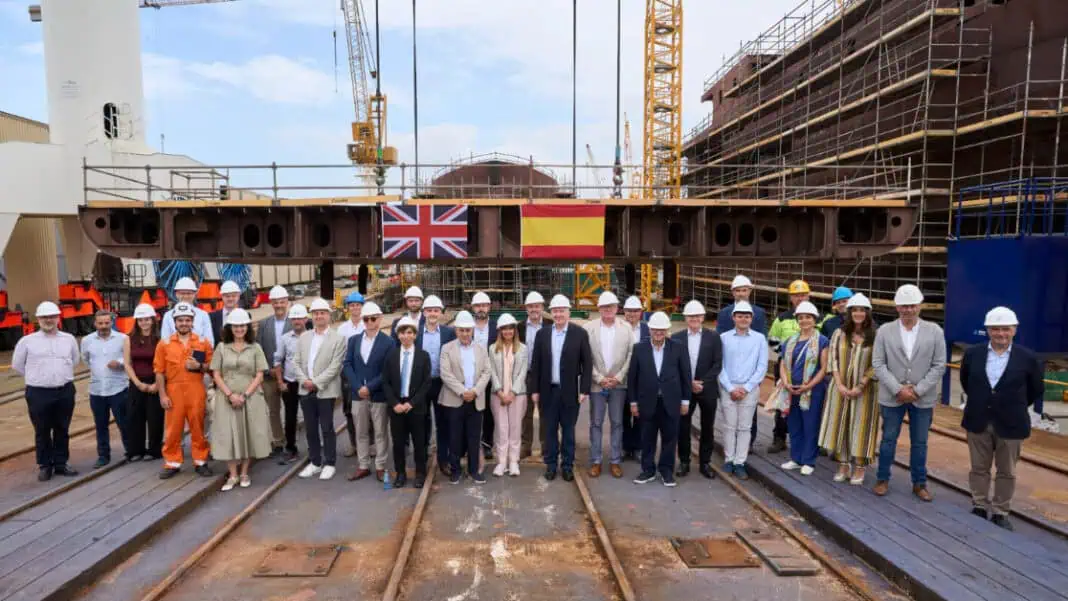Bibby Marine marked a historic milestone last week with the keel-laying ceremony of its first hybrid-electric Commissioning Service Operation Vessel (CSOV) at Armon Shipyard in Vigo, Spain. The event signals the start of construction for a vessel designed to eliminate operational emissions in offshore wind farms, combining dual-fuel methanol engines with the largest maritime battery system ever deployed.
The 6,700GT vessel will combine methanol engines and battery technology to deliver zero-emission commissioning and operations support to offshore wind farms. Once operational in 2027, the vessel will significantly reduce lifecycle emissions and fuel consumption while accommodating up to 120 personnel for offshore deployment lasting up to 30 days.
In a symbolic gesture during the ceremony, Bibby Line Group CEO, Jonathan Lewis, welded a coin from 1807 – the year the company was founded – into the keel plates to mark the official start of construction.
“This vessel is more than a feat of engineering – it’s a symbol of our values as a business, in action,” said Jonathan Lewis. “At Bibby Marine, we believe in doing the right thing, even when it’s difficult. We began work on zero-emissions vessels back in 2019, long before it was mainstream. As we lay the keel for our electric-first CSOV, we are proud to be proving that clean, sustainable maritime solutions are not only possible, but essential.”
This vessel is the latest step in Bibby Marine’s E-Mission Zero campaign – a call to industry to collaborate in building a cleaner, lower-cost future for offshore wind operations. It follows the launch of a public open letter in June 2025, co-signed by Bibby Marine, Kongsberg Maritime and Stillstrom, challenging the sector to act on lifecycle emissions.
Key partners in the project include Kongsberg, provider of the dynamic positioning and main propulsion package, battery provider, Corvus Energy and Wartsila, which provide engine and propulsion.
This milestone demonstrates that the future of maritime operations is already being built – and that clean technologies, when combined with deep collaboration, can accelerate decarbonisation at scale.












